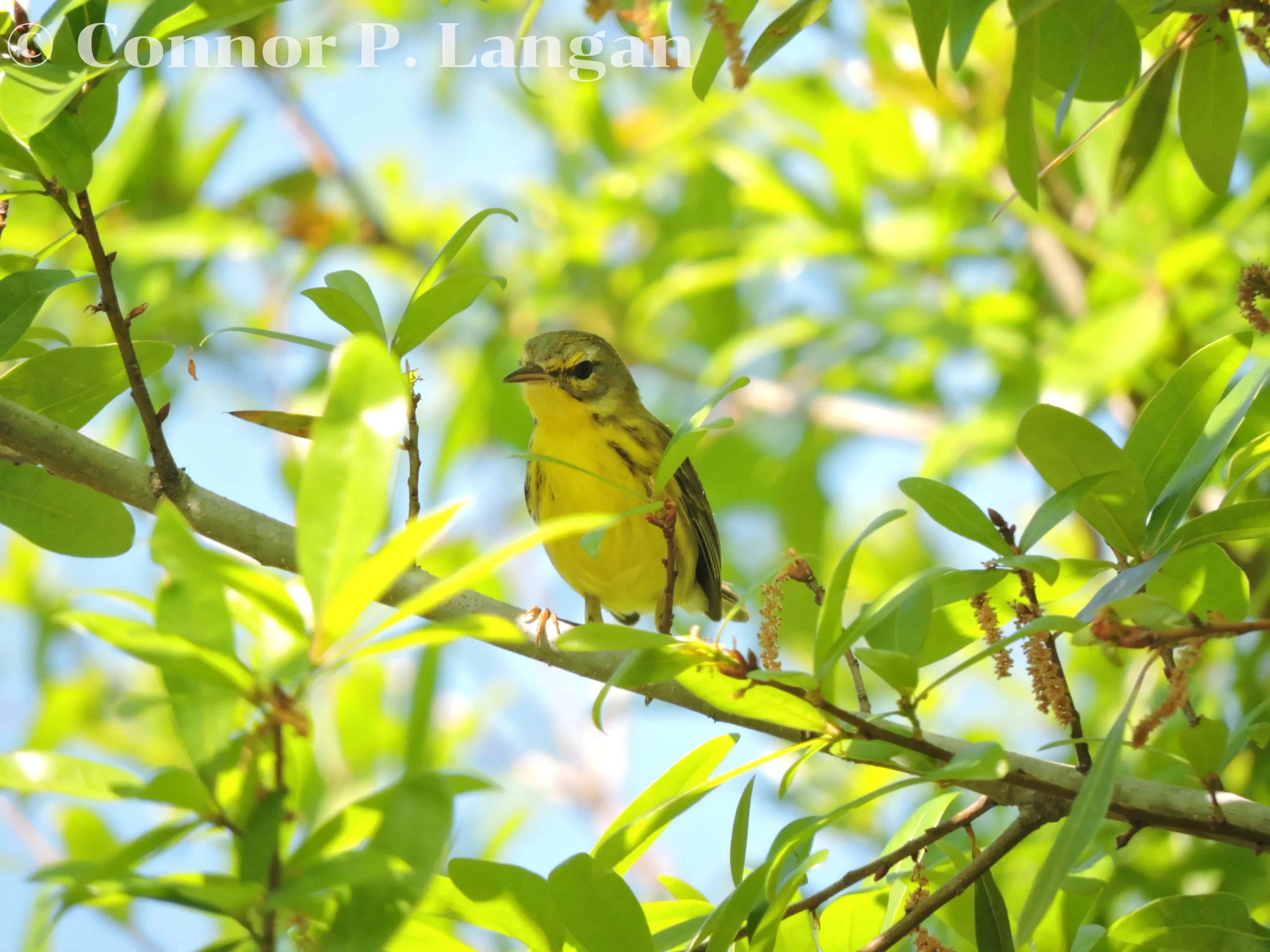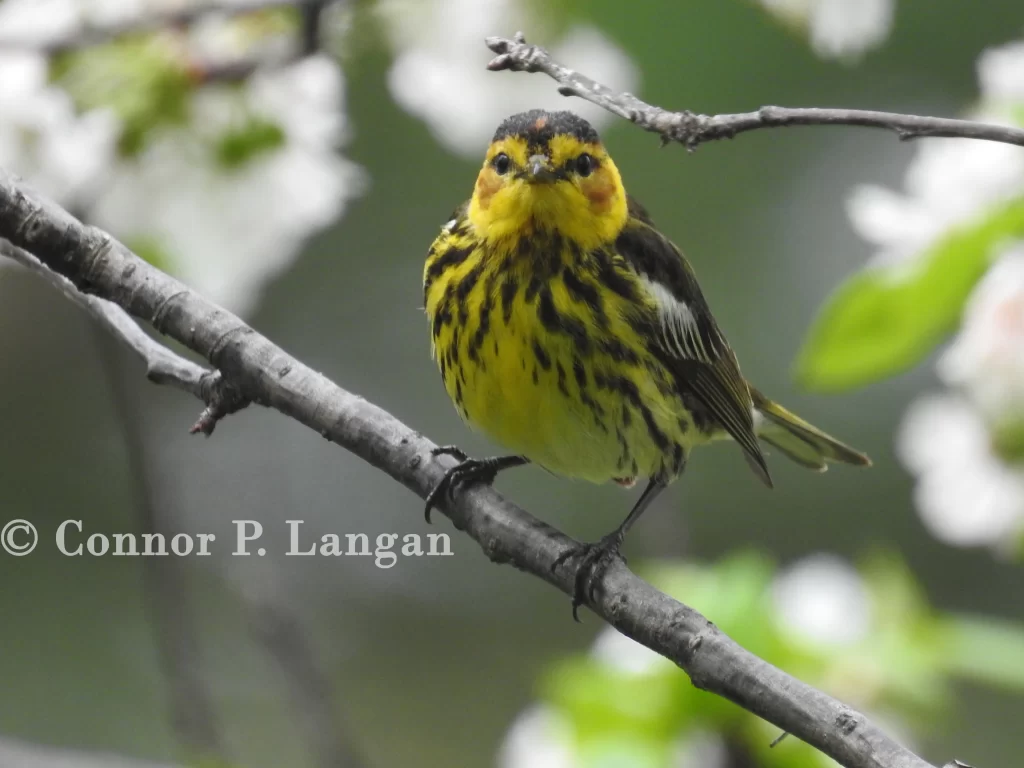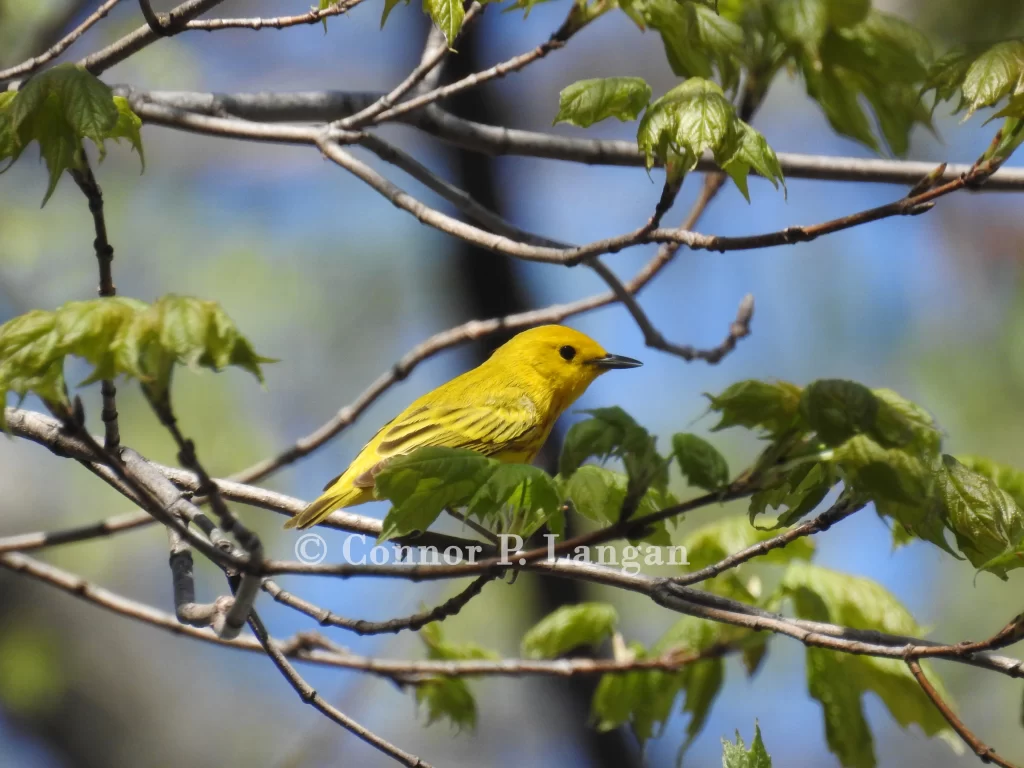Description
- Prairie Warblers have small beaks, small, rounded heads, and flanks with dark streaks.
- These warblers range in size from 4.3 to just over 5 inches long. They weigh around 0.3 ounces.
- The undersides of male Prairie Warblers are a vibrant color of yellow. Males have a black line extending through their eyes and a black half-circle below their eyes. Males also possess green backs and crowns and have dark wings.
- Female Prairie Warblers are a more subdued color of yellow below compared to males. Females have gray faces and light green backs. Females have dark lines through their eyes and a half circle below their eyes too.
- Immature Prairie Warblers look much like females.
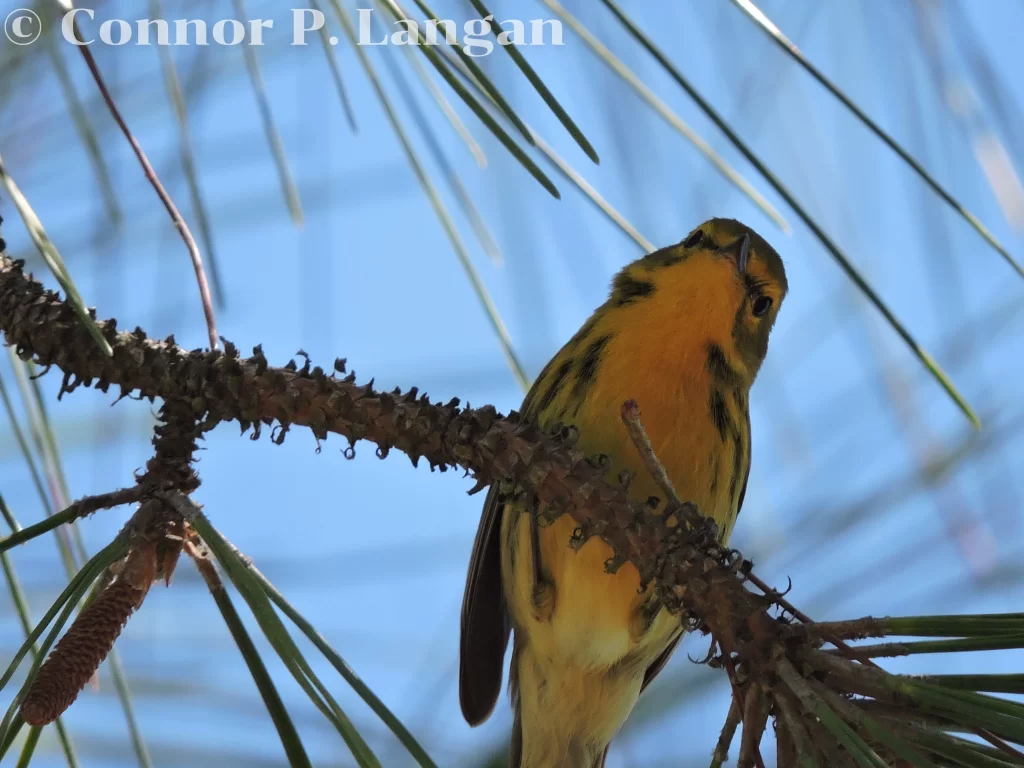
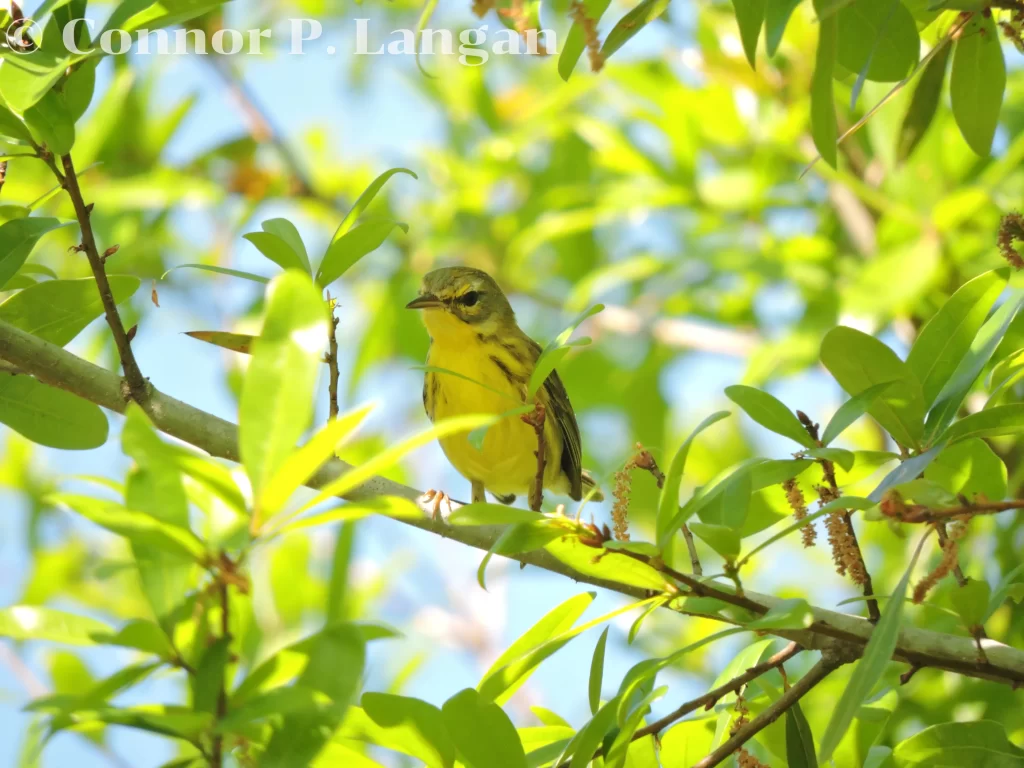
Behavior
- This warbler frequently bobs its tail while foraging. Prairie Warblers tend to keep to themselves during the breeding season. However, this species joins mixed groups of other bird species during the nonbreeding season.
Diet
- Prairie Warblers are largely insectivorous, with these birds consuming a variety of tiny insects. These warblers will eat fruit intermittently when insects are scarce.
Habitat
- Contrary to what their name suggests, Prairie Warblers are not found in prairies. Instead, these birds seek out early successional habitats for breeding.
- Therefore, open areas with an assortment of young trees and shrubs make for ideal breeding habitat for this species. Prairie Warblers are known to reproduce in mangroves in Florida.
Range
- This species breeds almost exclusively in the United States, though a small population breeds in Canada. Prairie Warblers can be found year-round in Florida.
- These birds migrate to the Eastern United States during the breeding season. Prairie Warblers spend the winter in the Caribbean and mangrove forests of Central America.
Breeding
- Prairie Warblers are socially monogamous by nature. However, individuals that wander outside of their breeding territory may seek extra-pair copulations.
- Prairie Warblers do not nest far from the ground, often placing their nests only a few feet up in a tree or shrub. These warblers seek out dense parts of trees or shrubs for their nesting location.
- Prairie Warblers construct cup-shaped nests. The exterior of the nest is made of leaves and other plant materials, while the interior is lined with soft plant fibers and other plush materials like fur or feathers.
- A female Prairie Warbler produces between 1 to 2 broods of eggs each year, while each clutch has 3 to 5 eggs. It takes anywhere from 10 to 15 days for young to hatch from eggs. Prairie Warbler nestlings depart from the nest in no more than 11 days.
Backyard Birding
- Prairie Warblers will not be observed feeding from a bird feeder or nesting in a birdhouse. However, these birds may bathe in birdbaths or nest in backyards with shrubby habitats.
Population Status
- Prairie Warbler populations have not fared well in the last half-century. Unfortunately, the populations of these birds declined by about 63% in that time.
- A total population of more than 3.5 million Prairie Warblers exists today. Though this species has lost ground in many areas, Prairie Warbler populations have spread in some locations in the Midwest thanks to climate change and deforestation.

